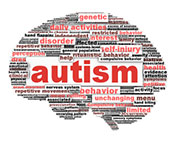- Skip Storing This Everyday Product in the Fridge Door
- Green Tea + B3 Pairing May Boost Brain Health
- Navigating Your Midlife Crisis: Embracing New Possibilities
- City Raccoons Showing Signs of Domestication
- Mapping the Exposome: Science Broadens Focus to Environmental Disease Triggers
- One Week Less on Social Media Linked to Better Mental Health
- Your Brain Changes in Stages as You Age, Study Finds
- Some Suicide Victims Show No Typical Warning Signs, Study Finds
- ByHeart Formula Faces Lawsuits After Babies Sickened With Botulism
- Switch to Vegan Diet Could Cut Your Greenhouse Gas Emissions in Half
Minority Kids May Be Missed in Autism Diagnoses: Study


Black and Hispanic students are less likely to be identified as having autism than white students, a new study reveals.
Researchers analyzed autism identification rates at schools across the United States between 2000 and 2007. These rates reflect how many students have been identified by schools — not necessarily a doctor — as having autism.
Rates among black, Hispanic and white students increased in all states and the District of Columbia, but the overall increase was smaller than predicted by the U.S. Centers for Disease Control and Prevention.
Rates among black students climbed in all states except Alaska and Montana, and rates among Hispanic students increased in all states except Kentucky, Louisiana and the District of Columbia, the investigators found.
Rate increases among black and Hispanic students were much smaller than among whites, according to the study in the November issue of the Journal of Special Education.
“Nearly every state that had proportional representation of students in 2000 underidentified black and Hispanic students in 2007,” Jason Travers, assistant professor of special education at the University of Kansas, and colleagues, wrote.
“Although there is no firm epidemiological evidence that race is predictive of autism, we found substantial racial differences in the ways U.S. schools identify students with autism,” they added.
The findings suggest that black and Hispanic students may not be getting the same level of autism services as white students, the researchers said in a university news release.
The racial differences suggest a number of problems, including unequal access to autism services, according to Travers.
“These data depict what’s going on in schools,” he said in the news release. “Whether or not they match with clinical diagnoses, the numbers can be associated with a variety of costs. They tell us about the human costs, financial resources dedicated to services, administrative costs, community costs and many others.”
More information
The U.S. National Institute of Neurological Disorders and Stroke has more about autism.
Source: HealthDay
Copyright © 2025 HealthDay. All rights reserved.










